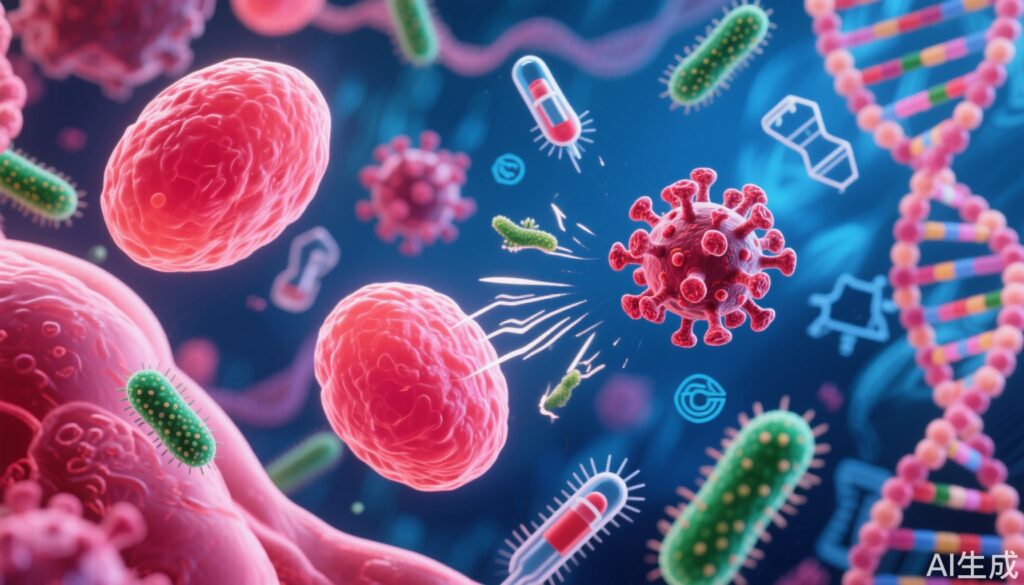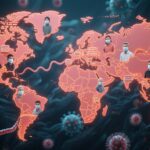Humanity’s Endless Duel with Microbes
From the earliest days of civilization, humans have faced invisible adversaries—viruses and microbes. The showdown between humanity and these microscopic entities has shaped the course of history, from ancient plagues to the COVID-19 pandemic. But is this a battle we can ever truly win or lose? Or is it an unending interplay of attack, adaptation, and coexistence?
The Invisible Army: Viruses and Microbes Explained
Microbes—encompassing viruses, bacteria, fungi, and protozoa—outnumber human cells in and on our bodies. Most are harmless or even beneficial, like the bacteria that aid our digestion or help train our immune system. Viruses, on the other hand, are not living organisms in the traditional sense; they require host cells to reproduce and often cause disease.
Yet, not all microbes or viruses are villains. The majority coexist peacefully with us, and some are essential for our survival. The real problem arises when pathogenic (disease-causing) microbes invade and overwhelm our defenses.
Scientific and Clinical Evidence: The Ever-Shifting Battlefield
The history of infectious diseases is a story of constant evolution. Pathogens mutate, adapt, and find new ways to evade our defenses, while humans develop new tools, from vaccines to antibiotics.
Take influenza as an example. Each year, the influenza virus mutates, leading to seasonal outbreaks and sometimes pandemics. Vaccines are updated annually, but the virus’s ability to change ensures the battle is never truly over (CDC, 2023).
One compelling case is that of John, a 54-year-old teacher from Chicago. Despite annual flu vaccinations, John contracted the flu in 2022—but experienced only mild symptoms. His case highlights the partial victories: vaccines may not always prevent infection, but they often reduce severity and save lives.
Table 1. Major Infectious Diseases and the Human Response
| Disease | Pathogen | Historical Impact | Current Status |
|---|---|---|---|
| Smallpox | Virus | Devastated populations for centuries | Eradicated via vaccination (WHO, 1980) |
| Tuberculosis | Bacteria | Major cause of death in 19th-20th c. | Controlled but not eradicated; drug resistance rising |
| COVID-19 | Virus | Global pandemic, millions affected | Endemic, controlled with vaccines and treatments |
| HIV/AIDS | Virus | Pandemic since 1980s | Chronic, manageable with antiretrovirals |
Misconceptions and Harmful Behaviors
Misinformation and misunderstanding have always fueled the spread of disease. For instance, the belief that antibiotics can treat viral infections is widespread but incorrect—antibiotics only work against bacteria. Overuse has led to the rise of antibiotic resistance, a looming global crisis (WHO, 2022).
In addition, vaccine hesitancy, fueled by misinformation, has caused resurgences of diseases once under control, such as measles (Salmon et al., 2021). The notion that “natural immunity” is always better than vaccine-induced immunity ignores the risks of severe illness, complications, and death from infections.
Correct Health Practices and Practical Recommendations
So, what can individuals and communities do to tip the balance in our favor?
– Get vaccinated according to national and local guidelines; vaccines are one of the most effective tools for preventing infectious diseases.
– Practice good hygiene: regular handwashing, respiratory etiquette, and proper food safety.
– Use antibiotics only as prescribed by qualified professionals.
– Stay informed from credible sources such as the CDC, WHO, and local health departments.
Expert Insights: The Dynamic Relationship
Dr. Emily Carter, infectious disease specialist at the University of Michigan, puts it succinctly: “There is no final victory or defeat in our relationship with microbes. Instead, it’s a dynamic equilibrium—microbes adapt, we adapt, and the balance is always shifting.”
The COVID-19 pandemic illustrated both our vulnerabilities and our strengths. Rapid vaccine development demonstrated the power of modern science, while the emergence of new variants revealed the adaptability of viruses.
Looking Forward: Coexistence, Not Conquest
The goal is not total eradication—impossible for most microbes—but sustainable coexistence. Through surveillance, rapid response, and ongoing research, humanity can minimize the impact of infectious diseases.
Emerging fields like microbiome research also suggest that nurturing beneficial microbes could be as important as fighting harmful ones. Personalized medicine, genomic surveillance, and global cooperation are the future frontlines of this battle.
Conclusion: The Never-Ending Game
Humanity’s relationship with viruses and microbes is less a war to be won than a game of adaptation and resilience. While science has delivered great victories—smallpox eradication, HIV management, COVID-19 vaccines—the challenge remains ongoing. By combining accurate knowledge, sound public health practices, and scientific innovation, we can continue to tip the odds in our favor.
References
Centers for Disease Control and Prevention (CDC). (2023). Key Facts About Influenza (Flu).
World Health Organization (WHO). (1980). The Global Eradication of Smallpox.
World Health Organization (WHO). (2022). Antimicrobial resistance.
Salmon, D. A., Dudley, M. Z., Glanz, J. M., & Omer, S. B. (2021). Vaccine hesitancy: Causes, consequences, and a call to action. Vaccine, 39(14), 1976-1981.



